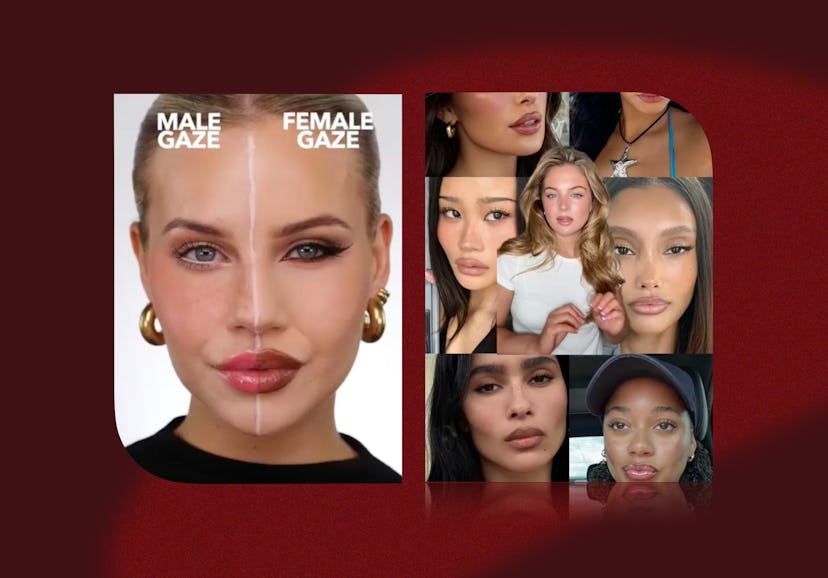In 1975, film theorist Laura Mulvey coined the “male gaze” — the idea that women on screen exist as erotic objects while men move the story forward. The camera looks at women. Male characters look at women. And, eventually, women learn to look at themselves the same way.
Flash-forward 50 years, where TikTok has basically become the new silver screen, and women are renegotiating their relationship to desirability, using beauty as the battleground. Enter: the “male gaze versus female gaze” makeup trend.
“Male Gaze” Vs. “Female Gaze” Makeup
On social media, the “male gaze” has left academia and morphed into shorthand for the “girl-next-door” aesthetic — soft, clean, and innocently earnest.
A recent psychology study found that men perceive the “peak” level of attractiveness as about 40% less makeup than many women actually wear. They also rate the same woman with heavier glam as “less trustworthy” and “more intimidating.” Yet they’re notoriously bad at detecting makeup at all — correctly guessing only 30% of the time.
As such, male gaze makeup leans into the illusion of effortless beauty, even when it’s anything but. Think glossy pink lips, a dewy base, fluffy brows, and a single coat of mascara. It’s makeup that reads as universally pretty rather than overtly sexy — ironic, given the male gaze’s roots in eroticism. But apparently, for them, less is still more.
Female gaze makeup, meanwhile, flips the priorities. Instead of performing prettiness, it emphasizes play and personality — even if that means embracing looks men allegedly “don’t get.” Think back to the infamous birthday makeup discourse of 2023, when men complained en masse about bold glam.
Other “female gaze” staples include graphic liner, blush draping, vampy lips, clumpy mascara, colorful smoky eyes — basically, any choice that signals fun over palatability. It’s makeup that’s meant to be interesting and authentic to the wearer.
Female Gaze FTW
Of course, there’s no wrong way to do your makeup — and if your everyday look is soft glam, you’re not automatically bending to the “male gaze.” (Ironically, changing your routine out of fear of being male-gaze-y is kind of… male-gaze-y.)
Ultimately, the male gaze versus female gaze makeup trend is a playful way of interrogating who beauty is for and how much of our routines are still shaped by invisible expectations. But its growing popularity online points to something real: women are increasingly aware of the audience in the room — digital or internalized — and are pushing back.
And at a time when women’s rights feel increasingly strained around the world, it makes sense that beauty is being reclaimed as a domain of selfhood — especially in a digital landscape where everyone is both the viewer and the viewed. From “tired girl” makeup to “butter glam” and “disco lips,” today’s trends make it clear that beauty is no longer monolithic. Makeup doesn’t have to be pretty — it just has to be true to you.
